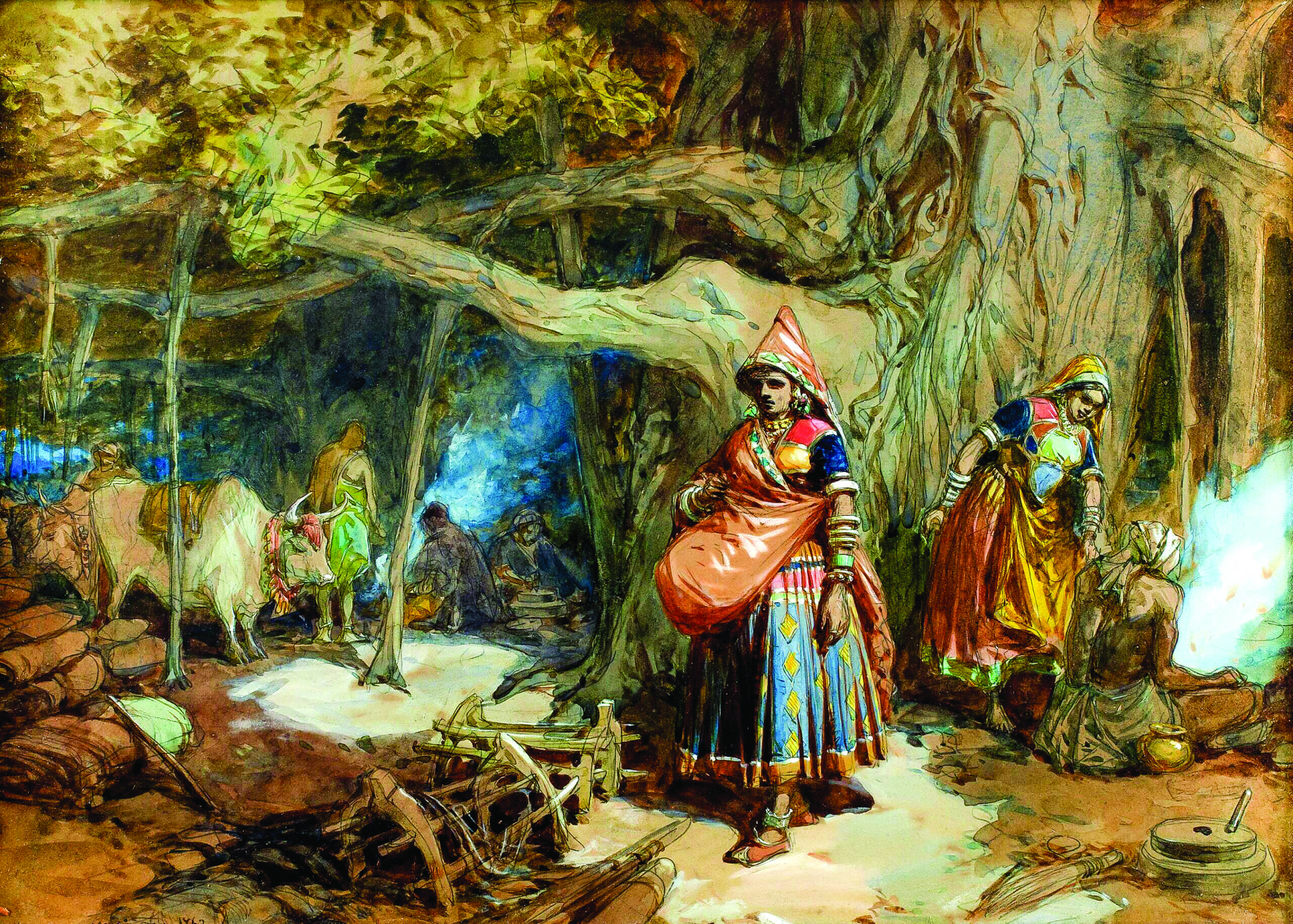The exhibition displays the works of lesser-known artists who captured India’s aesthetic splendour to reflect in their artistic creations, under the colonial regime.
When we think of India represented through the colonial artistic lens, the first artists that come to mind are William Hodges and Thomas Daniell. However, in addition to these early stalwarts, the historic period from 1857 to 1947 saw a large number of travellers from around the world, visiting and capturing India’s unparalleled beauty through their art. DAG New Delhi’s latest exhibition titled ‘Destination India: Foreign Artists in India 1857-1947’ shines a light on the works of these lesser known yet impactful artists.
“Destination India focuses on foreign artists travelling to India from different parts of the world between the late nineteenth and early twentieth centuries – a less explored but equally fascinating period, coinciding between the Uprising (1857) and Independence (1947). In this selection of works, one encounters a host of people and places of India, as seen through the eyes of nearly 40 artists from many countries, who were intent on a more personal and intimate engagement with the subcontinent,” explains Giles Tillotson, Senior Vice President, DAG.
As with most of their exhibitions, this one too comes with an accompanying publication which contains a foreword by Dr Shashi Tharoor and essays by historians Pheroza Godrej and Tillotson. This exhibit focuses on the work of foreign artists who travelled to India from countries like Germany, Holland, Denmark, France, America, Japan, and Britain, who created work in the style of the late phase of Orientalist art. The period in focus is from the late nineteenth to the early twentieth centuries and explores the perspective of a new generation of artists who found beauty in the Indian subcontinent.
The exhibition has been curated by Tillotson and it opened on July 13 at DAG, New Delhi. The works on display include paintings and etchings made during the height of India’s colonial period. At this time, images from Indian society and of Indian people, were being popularised as picture postcards and photographs. Hence, there was less focus on the paintings of foreigners in India, despite their historical importance in the larger story of Orientalist painting.
Tillotson shares, “While the pioneers, artists who visited India in the late eighteenth and early nineteenth centuries, sought grand monuments and vast new landscapes as part of Enlightenment-inspired projects to investigate India’s civilisations: to expose its historic heritage to the West; the foreign Orientalist painters of India – whether British, German,
Dutch, Danish, American or Japanese – who followed later, offered intimate glimpses of Indian life, often at street level as Europe’s scholarly study of India’s past continued – indeed expanded – in the Victorian era.”
The first artist of this generation was Edward Lear, who toured India for over a year
between
Ashish Anand, CEO and MD, DAG, says, “When considering British and other European representations of India, the focus is often on the pioneers. The problem with this traditional trajectory is that it overlooks the many interesting artists who visited India – from England and from other European countries – in the late nineteenth and early twentieth centuries. These were conventional artists working with oil and watercolour, and various print media, like the earlier pioneers. Some – like Mortimer Menpes and Walter Crane – produced illustrated books, just as James Prinsep and Robert Grindlay had almost a century earlier. They came to India with a different aesthetic sensibility and with different interests. In their works, we find an India – if we can put it this way – that we do not just see, but that we can hear and smell.”
Interestingly, these art works are different from those of their predecessors in, that they focus on a specific kind of representation of India. We see the daily routines of Indian markets or princely havelis, a variety of ordinary people going about their day in the streets, and a visible shift away from merely capturing India’s many monuments. As Tillotson puts it, “The exhibition ‘Destination India’ signifies a shift in perception and engagement with a land that was becoming increasingly intertwined with the Western world.”
“In this selection of works, one encounters a host of people and places of India, as seen through the eyes of nearly 40 artists from many countries. Serving as a reminder that the advent of new technology did not put an end to older forms of artistic production but encouraged artists into new directions, the exhibition brings artwork back and on display in the subcontinent, many of them almost a century after they were made, while investigating the perspective of the European artist, that was undoubtedly influenced by ideas of romanticism, marred by prejudice, but was an important one, if one is to understand the shaping of Indian visual culture.”
DAG was established in 1993 as an art gallery, but, has since grown to become India’s leading art company with a rich collection dating back to the eighteenth century. Their vast in-house collection includes both- recognised masters and marginalised artists, and they are also credited with bringing heritage works from overseas back to India.
Through a variety of curated exhibitions, an impressive library of books published by them which document Indian art history, programmes focussed on engaging the public, and continued engagement with artists, critics and the art community in general, DAG displays a steadfast commitment to disseminating and promoting Indian art through its galleries in Mumbai, New Delhi and New York.
“Destination India: Foreign Artists in India, 1857-1947” will be on display at DAG, New Delhi from 13 July – 24 August.
Noor Anand Chawla pens lifestyle articles for various publications and her blog www.nooranandchawla.com.

